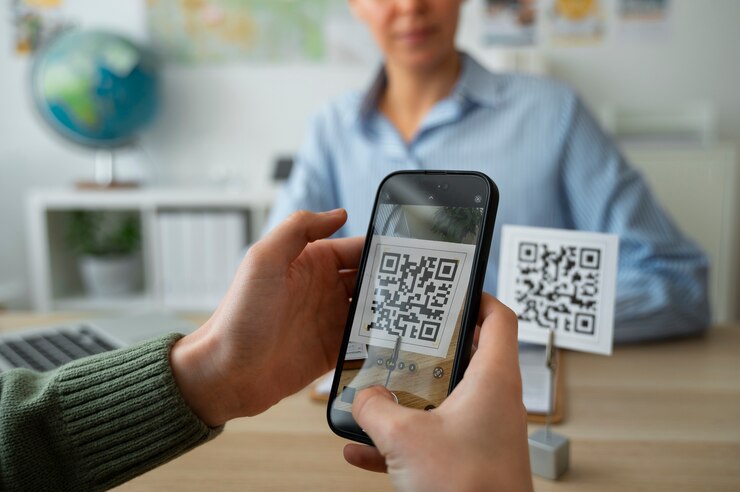QR codes are becoming increasingly popular as a simple way to connect people with information almost instantly. A QR code generator allows users to create unique codes that can link to websites, contact details, or even Wi-Fi networks with just a quick scan. This tool is not just for tech-savvy individuals; anyone can design a QR code that suits their needs, whether for marketing, business, or personal use.
Multiple online platforms offer easy-to-use QR code generators, allowing for customization in design, colors, and more. These personalized codes can enhance branding and make it easier for users to access vital information. From providing promotional links to sharing contact information, the possibilities with QR codes are extensive and efficient.
With the right generator, anyone can create a professional-looking QR code in minutes. Exploring how these tools work and the various features they offer can open up new opportunities for using QR codes effectively.
Key Takeaways
- QR codes provide quick access to information through scanning.
- Simple tools exist for anyone to create custom QR codes.
- Understanding QR code uses can enhance marketing and personal communication.
Understanding QR Codes
QR codes are versatile tools for quickly sharing information. They can store various types of data and are used in many settings, from marketing to personal use. The following sections will explore their history, technical aspects, and common applications.
History and Evolution
QR codes were first developed in 1994 by a Japanese company called Denso Wave. The aim was to track automotive parts during manufacturing. Unlike traditional barcodes, QR codes can hold more data. This capability made them popular beyond industrial applications.
Over time, the rise of smartphones and mobile technology increased their use. By the late 2000s, QR codes began appearing in advertisements and product packaging. They allowed quick access to websites and promotions by simply scanning with a phone. Their evolution continues, as new ways to utilize QR codes emerge regularly.
Technical Overview
A QR code is a two-dimensional matrix barcode that can store information like URLs, text, and contact details. It consists of black squares arranged on a white grid. This design enables scanners to read the code quickly from any angle.
QR codes can hold up to 7089 digits or 4296 characters. They also support numeric, alphanumeric, and binary data types. This flexibility makes them useful for many applications. To generate a QR code, users can use various online tools, ensuring ease of access for everyone.
Common Uses
QR codes have a wide range of applications across different industries. They are often used in marketing materials. Businesses include them in ads, posters, and product packaging to direct customers to websites or promotions.
In retail, QR codes can streamline checkout processes and provide product information. They are also used in event ticketing, where users scan codes for entry. Beyond business, individuals use QR codes for personal tasks, like sharing Wi-Fi passwords or contact information easily. Many people now recognize them, making them a valuable tool in today’s digital landscape.
Creating QR Codes
Creating a QR code is a simple process that involves selecting the right generator, customizing the design, following best practices, and validating the code. Understanding these steps helps ensure that the generated QR code meets the desired purpose effectively.
Choosing a QR Code Generator
Selecting a QR code generator is the first step in the creation process. Many options are available, each with different features. Some popular free generators include Canva, QR Code Monkey, and Adobe Express.
Important factors to consider when choosing a generator include:
- Ease of Use: Look for user-friendly interfaces.
- Features: Check for options such as URL shortening, dynamic codes, and tracking capabilities.
- Customization: Ensure the generator allows logo addition and color adjustments.
- Quality: High-resolution codes are better for printing.
Design Customization Options
Customization is essential to ensure that the QR code aligns with branding. Most generators allow users to personalize their QR codes. This includes options for colors, shapes, and logos.
Common customization features include:
- Color: Users can select foreground and background colors.
- Logo Insertion: Adding a logo can help with brand recognition.
- Shape Variations: Change the appearance of the dots and corners for a unique look.
The customization should not interfere with the QR code’s readability. It’s crucial to maintain a balance between artistic design and functional clarity.
Best Practices for Generation
Following best practices when generating QR codes enhances their effectiveness. Some key practices include:
- Keep it Simple: Avoid excessive data. Shorter URLs or text improve scannability.
- Use Standard Formats: Stick to QR code standards to ensure compatibility with all scanners.
- Test Different Sizes: Ensure the QR code is clear and readable in various sizes.
Using static QR codes is often sufficient for most uses. Dynamic codes offer advanced tracking and editing opportunities but may require subscriptions.
Testing and Validation
After creating a QR code, testing it is crucial. Scanning the code with multiple devices ensures that it works correctly. Here are essential steps for testing:
- Multiple Devices: Test with various smartphones to check for compatibility.
- Different Apps: Use different QR code scanning apps to ensure it works across platforms.
- Functionality Check: Confirm that the QR code directs to the correct URL or information.
Validating the QR code helps spot any potential issues before it is distributed or printed, ensuring a smooth user experience.


